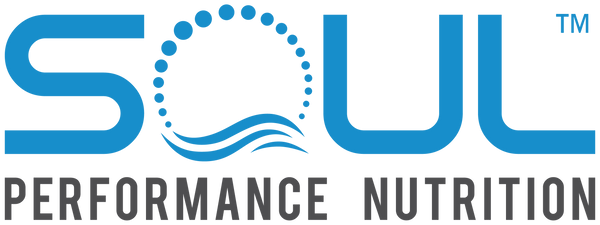In recent years, the compound trimethylamine N-oxide (TMAO) has gained significant attention in the field of nutrition and health. TMAO is produced in the body through the metabolism of certain nutrients and has been associated with various health implications, including cardiovascular disease, kidney disease, liver disease, and diabetes. However, there is ongoing research and controversy surrounding TMAO, and its exact role in health and disease is not yet fully understood. In this blog post, we will take an in-depth look at TMAO, including its chemical structure, metabolism, food sources, functions, health implications, and factors affecting its levels in the body.
Metabolism of TMAO:
TMAO is formed in the body through the metabolism of choline, betaine and carnitine, which are abundant in certain foods. In the gut, choline, betaine and carnitine are converted by gut bacteria into trimethylamine (TMA). TMA is then absorbed into the bloodstream and transported to the liver. In the liver, an enzyme called flavin-containing monooxygenase 3 (FMO3) oxidizes TMA to TMAO. Although the liver is the primary site of TMAO synthesis, other tissues and organs in the body can also produce small amounts of TMAO.
Food Sources of TMAO:
Choline, betaine and carnitine, the precursors for TMAO, are found in various foods. Choline is abundant in foods like eggs, liver, fish, poultry, and dairy products, as well as some plant-based sources like soybeans and quinoa. Carnitine is found mainly in meat and dairy products. Therefore, consumption of these foods can potentially increase TMAO production in the body.
Functions of TMAO:
TMAO has been proposed to play a role in osmoregulation, which is the maintenance of proper salt balance in cells. Some marine animals, such as certain species of sharks and rays, use TMAO to help them regulate the osmotic pressure in their bodies, allowing them to live in high-salinity environments. TMAO has also been implicated in cholesterol metabolism, as it has been shown to promote the formation of foam cells in blood vessels. Foam cells are a hallmark of atherosclerosis, a condition characterized by plaque build-up in arteries.
Health Implications of TMAO:
The relationship between TMAO and health is complex and still an area of ongoing research. Some studies have suggested that elevated levels of TMAO in the blood may be associated with an increased risk of cardiovascular disease. TMAO has been shown to promote inflammation, oxidative stress, and cholesterol accumulation in blood vessels, which may contribute to the development of cardiovascular disease. TMAO has also been linked to other health conditions such as kidney disease, liver disease, and diabetes. However, it's important to note that the research on TMAO is still evolving, and more studies are needed to fully understand its health implications.
Factors Affecting TMAO Levels:
Several factors can affect TMAO levels in the body, including:
-
Diet: Consumption of foods rich in choline and carnitine, such as eggs, liver, fish, poultry, dairy products, and meat, can increase TMAO production in the body. Conversely, a diet low in these precursors may result in lower TMAO levels.
-
Gut microbiota composition: The composition of gut bacteria can impact TMAO levels. Some gut bacteria have the ability to convert choline and carnitine into TMA, which is then absorbed into the bloodstream and converted to TMAO in the liver. The types and abundance of gut bacteria can vary among individuals, influencing their TMAO levels.
-
Genetic factors: Genetic variations can affect the metabolism of TMAO in the body. For example, some individuals may have genetic variants that result in reduced activity of the enzyme FMO3, which is responsible for converting TMA to TMAO in the liver, altering TMAO levels.
-
Liver function: The liver is the primary site of TMAO synthesis. Impaired liver function, such as in liver disease, can affect the conversion of TMA to TMAO, potentially leading to altered TMAO levels in the body.
-
Kidney function: The kidneys play a role in the clearance of TMAO from the body. Impaired kidney function, such as in kidney disease, can affect the elimination of TMAO, leading to higher levels in the blood.
-
Other factors: Other factors such as age, sex, body mass index (BMI), and overall health status may also impact TMAO levels. For example, older individuals and those with higher BMI may have higher TMAO levels, while certain health conditions such as diabetes and cardiovascular disease have been associated with altered TMAO levels.
In conclusion, TMAO, or trimethylamine N-oxide, is a compound that is produced in the body through the metabolism of choline and carnitine, which are abundant in certain foods. TMAO has been associated with various physiological processes in the body and has been linked to health conditions such as cardiovascular disease, kidney disease, liver disease, and diabetes. However, the relationship between TMAO and health is complex, and more research is needed to fully understand its mechanisms and potential health implications. Factors such as diet, gut microbiota composition, genetics, liver function, and kidney function can all impact TMAO levels in the body.
As with many aspects of nutrition and health, it's important to consider TMAO in the context of an overall balanced diet and lifestyle. While some research suggests a potential link between TMAO and certain health conditions, it's important to note that many other factors can also contribute to the development of these conditions. Eating a diverse and balanced diet, maintaining a healthy lifestyle, and consulting with a healthcare professional are all important steps in promoting overall health and well-being.
These statements have not been evaluated by the Food and Drug Administration. This product is not intended to diagnose, treat, cure or prevent any disease.

